Banyasa Temple (반야사(논산))
15.5Km 2024-10-04
104 Samjeon-gil, Gayagok-myeon, Nonsan-si, Chungcheongnam-do
Banyasa Temple is a unique temple with many of its buildings located in an old mine shaft. Upon first sight, visitors may feel disappoint at what appears to be simply the Daeungjeon Hall standing before a rock cliff. However, walking behind the main hall leads to the entrance to the mine. Because the mine shaft is cool in summer and warm in winter, it's a great attraction to visit all year round.
Donamseowon Confucian Academy [UNESCO World Heritage] (돈암서원 [유네스코 세계문화유산])
15.8Km 2021-06-22
26-14, Im 3-gil, Nonsan-si, Chungcheongnam-do
+82-41-736-0096
Donamseowon Confucian Academy was built in 1634, originally 1.5 kilometers away from its current location. It received a royal charter in 1660 and relocated to its current location in 1880 due to flooding problems. The academy's main gate, Ipdeokmun Gate, is made up of three entrance doors. Once inside, Yangseongdang Hall can be seen facing the main gate, with Eungdodang Hall to the left. Ancestral rites take place every February and August at Jungjeong Hall. Inside the academy is a shrine that houses the ancestral tablets of four prominent scholars who taught at this institution - Kim Jang-saeng, Kim jip, Song Jun-gil, and Song Si-yeol. Among the academies that served Kim Jang-saeng and his teachings, Donamseowon is considered the most important and influencial.
Buyeo Sky Banner (부여하늘날기)
15.9Km 2025-10-28
12 Seongwang-ro 173beon-gil, Buyeo-gun, Chuncheongnam-do
Buyeo Sky Banner is the only place that offers free-flying hot air balloon ride in Korea and was designated as one of the top ten themed travels by Korea Tourism Organization. Buyeo is a rural region considered ideal for flying hot air balloons due to its relatively low mountain terrains. The balloons fly a distance of seven to eight kilometers over the Baengmangang River, offering a bird's-eye-view of Buyeo and the Geumgang River as well as the many historical heritages from the Baekje period.
Buyeo Market & Baengmagang Moonlight Night Market (부여장 (5, 10일) / 백마강달밤야시장)
16.0Km 2024-07-03
12 Seongwang-ro 173beon-gil, Buyeo-eup, Buyeo-gun, Chungcheongnam-do
Buyeo Market is a 5th-day market that opens every month on the 5th, 10th, 20th, 25th, and 30th or 31st (last day) of the month in the Gua-ri area of Buyeo-gun, Chungcheongnam-do. The market is regularly within the permanent market area spans over 9,693 ㎡. The market is visited by 2,000 customers on a daily basis and offers a wide variety of goods such as grain products, general supplies, fruits, and more. On Fridays and Saturdays, Baengmagang Moonlight Night Market takes place in the evening from 18:00 to 23:00. Visitors will find a charming stage and diverse food vendors equipped with tables and seats.
Nakhwaam Rock (낙화암)
16.0Km 2021-09-14
Bukpo-ro, Buyeo-gun, Chungcheongnam-do
+82-41-830-2880
Nakhwaam is a rock cliff towering over Baengmagang River in the northern end of Busosan Mountain. According to the legend, this is where the royal court women of Baekje jumped off to kill themselves when the kingdom of Baekje was defeated during the invasion of Sabiseong Fortress (now Busosanseong Fortress in Buyeo) by the Shilla-Tang Alliance. The name of this rock, Nakhwaam, literally means "the cliff of falling flowers" and symbolizes the fidelity and loyalty of Baekje women.
Archaeological Site in Gwanbuk-ri and Busosanseong Fortress [UNESCO World Heritage] (관북리유적과 부소산성 [유네스코 세계유산])
16.0Km 2024-02-29
Gua-ri & Gwanbuk-ri, Buyeo-eup, Buyeo-gun, Chungcheongnam-do
+82-41-830-2880
Archaeological Site in Gwanbuk-ri and Busosanseong Fortress are historical sites dating back to the Baekje period (BC 18-AD 660), when they served as the capital from 538 to 660 AD. Archaeological Site in Gwanbuk-ri functioned as the royal palace where the king resided and governed during peacetime, while Busosanseong Fortress served as a defensive wall for wartime preparedness. Many Baekje historical relics have been excavated from these sites, and there is a virtual experience center called Sabido Fortress for visitors to explore, along with guided tour services available.
Kudurae Dolssambap (구드래돌쌈밥)
16.2Km 2024-03-28
31 Naruteo-ro, Buyeo-eup, Buyeo-gun, Chungcheongnam-do
+82-41-836-9259
Kudurae Dolssambap is situated on the Goodtrae Food Street in Buyeo, the historic capital of the Baekje kingdom. The restaurant is renowned for its dolssambap - a nutritious set meal consisting of rice cooked in a hot stone pot, accompanied by a selection of vegetables and side dishes. This signature dish emphasizes the use of medicinal plants and vegetables, promoting a wholesome dining experience.
Gudeurae Park (구드래조각공원)
16.4Km 2025-03-22
60, Naruteo-ro, Buyeo-gun, Chungcheongnam-do
+82-41-830-2880
Located at the western end of Busosan Mountain along the Baekma River, the Gudeurae region boasts beautiful scenery and a well-developed sculpture park. The port in the region acted as an entrance to the Sabi Castle during the Baekje dynasty and today serves as a dock for the cruise ship that travels up and down the Baekma River. Restaurants serving delicious regional cuisine are located near the dock, making the area a recommended tourist location for visitors who are looking for a combination of natural beauty and flavorful culinary delights.
Gudeurae was designated a Korea tourist region in 1985. Following the official designation, a sculpture park housing 59 sculptures was established in the area. Thirty of the works of art were crafted by sculptors residing in Gudeurae who are known for skills that have been handed down from artists dating back to the Baekje Period. The other 29 pieces are from Korean and overseas artists who participated in the International Modern Sculpture Symposium in 1999. The sculptures bring about a sense of beauty that reflects the region’s history as well as modern art, making the park a popular tourist site and retreat for residents. A monument built in memory of a well-known folk song describing the beauty of Gudeurae is also located in the region.
Goransa Temple (고란약수)
16.7Km 2021-11-26
1-25, Buso-ro, Buyeo-gun, Chungcheongnam-do
+82-41-830-2623
Goransa Temple is located at the foot of the cliffs of Nakhwaam before the Baengmagang River. There is a well called Goranjeong behind the temple. The kings of Baekje are said to have drank water from this well at least once a day. It is said the water will make anyone who drinks it become three years younger.
Nonsan Myeongjae House (논산명재고택)
16.8Km 2025-12-05
50 Noseongsanseong-gil, Noseong-myeon, Nonsan-si, Chungcheongnam-do
Myeongjae House in Nonsan, also known as Yoon Jeung's House, faces the village. At its backdrop is the scenic landscape of Noseongsan Mountain, and behind the gates is a large rectangular pond. Inside the pond, there is a small, round rock, as if an island, where a 300-year-old tree has stood the test of time alongside the old house. Walk past the pond and ascend the stone steps to the front yard, where a sarangchae (main guest room) greets visitors. In 1984, the house was recognized for its value and designated as a National Folk Cultural Heritage. This traditional house offers hanok stays, as well as experience programs such as tea ceremonies, natural dyeing, and traditional music performances. Nearby attractions include Noseongsanseong Fortress, Noseonghyanggyo Confucian School, Noseong Gwollisa Temple, and the main neighborhood of Noseong-myeon.

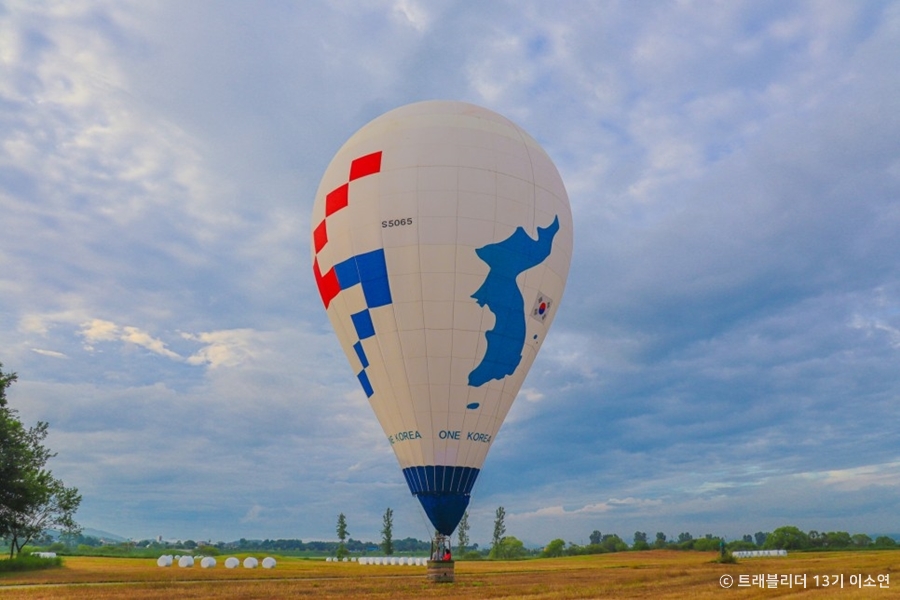
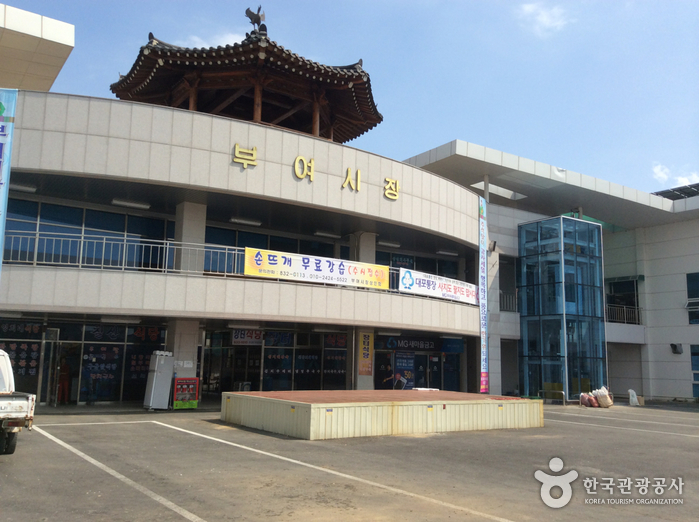
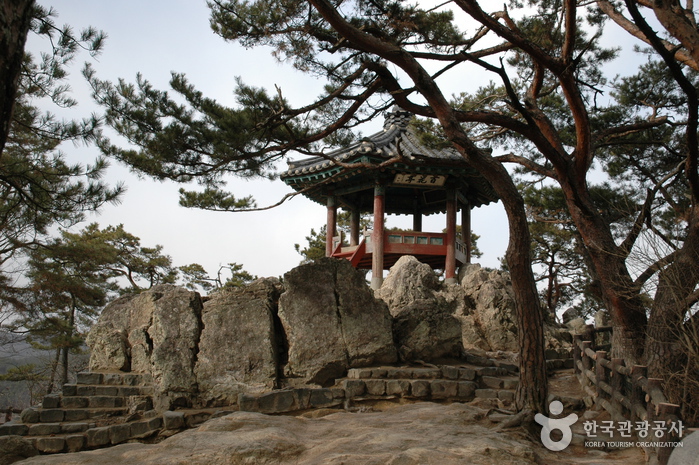
![Archaeological Site in Gwanbuk-ri and Busosanseong Fortress [UNESCO World Heritage] (관북리유적과 부소산성 [유네스코 세계유산])](http://tong.visitkorea.or.kr/cms/resource/33/2366333_image2_1.jpg)
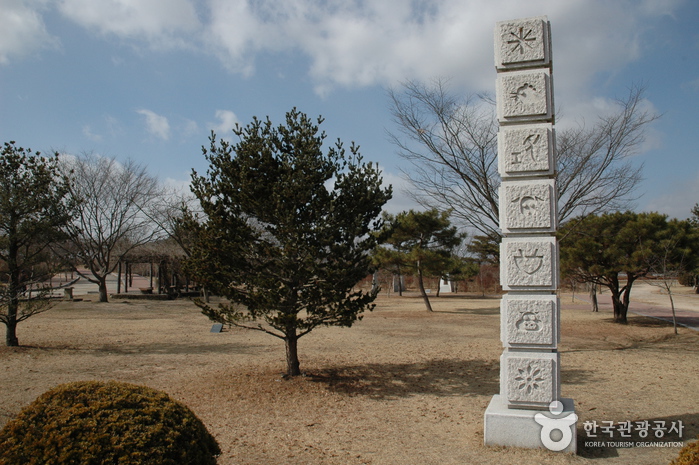
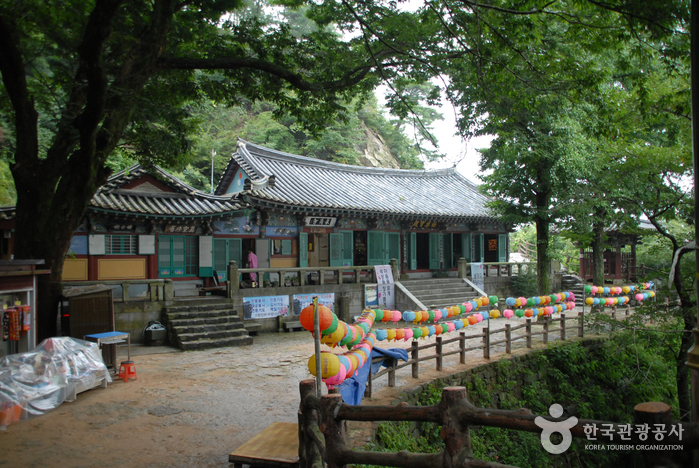
 English
English
 한국어
한국어 日本語
日本語 中文(简体)
中文(简体) Deutsch
Deutsch Français
Français Español
Español Русский
Русский